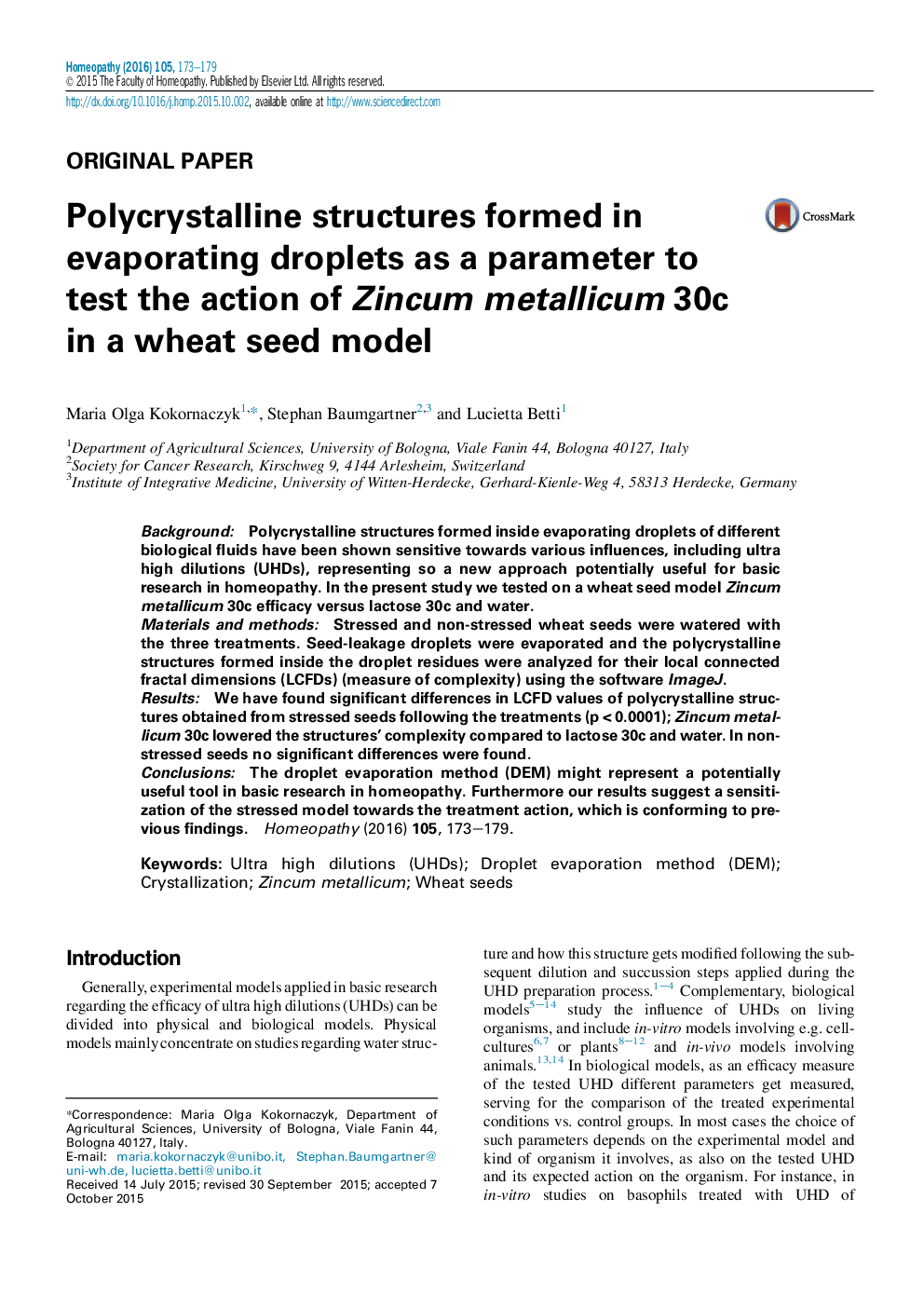| Article ID | Journal | Published Year | Pages | File Type |
|---|---|---|---|---|
| 2629715 | Homeopathy | 2016 | 7 Pages |
•We studied poly-crystals grown in evaporating droplets of wheat seed leakages.•The structure complexity showed to be sensitive to Zincum metallicum 30c action.•Stressed model responded better to the treatment than the non-stressed one.•The structure complexity seems to depend on the moon's relative position to Earth.•Droplet evaporation method (DEM) might be useful for basic research in homeopathy.
BackgroundPolycrystalline structures formed inside evaporating droplets of different biological fluids have been shown sensitive towards various influences, including ultra high dilutions (UHDs), representing so a new approach potentially useful for basic research in homeopathy. In the present study we tested on a wheat seed model Zincum metallicum 30c efficacy versus lactose 30c and water.Materials and methodsStressed and non-stressed wheat seeds were watered with the three treatments. Seed-leakage droplets were evaporated and the polycrystalline structures formed inside the droplet residues were analyzed for their local connected fractal dimensions (LCFDs) (measure of complexity) using the software ImageJ.ResultsWe have found significant differences in LCFD values of polycrystalline structures obtained from stressed seeds following the treatments (p < 0.0001); Zincum metallicum 30c lowered the structures' complexity compared to lactose 30c and water. In non-stressed seeds no significant differences were found.ConclusionsThe droplet evaporation method (DEM) might represent a potentially useful tool in basic research in homeopathy. Furthermore our results suggest a sensitization of the stressed model towards the treatment action, which is conforming to previous findings.
